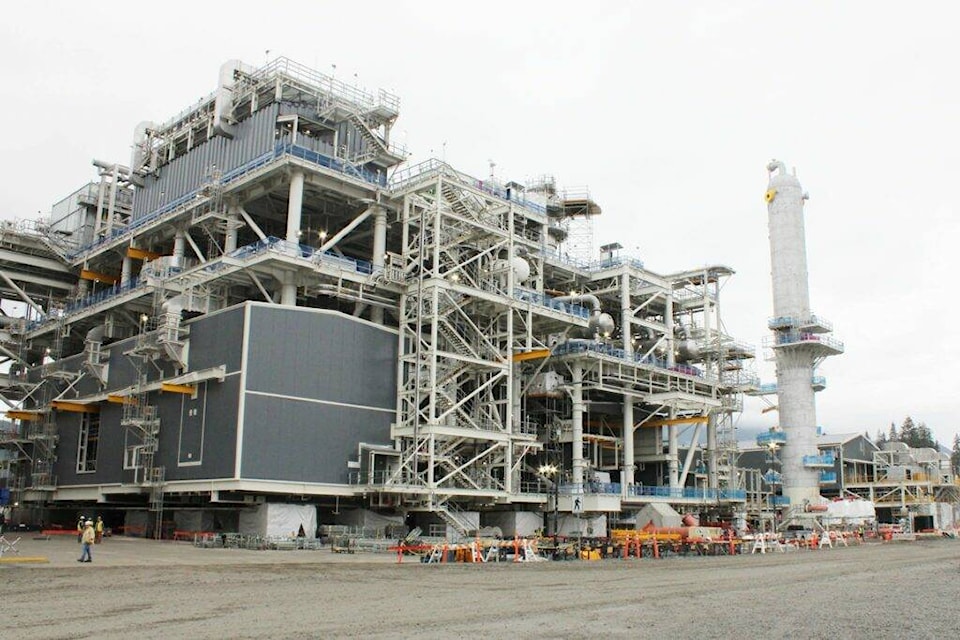BC Hydro is asking big northwestern B.C. industrial players how much electricity they might need so if they commit to buying the power, the Crown corporation can build the transmission lines to deliver it.
BC Hydro said it will start the process of assessing the electricity needs of companies such as LNG Canada and work toward setting up the required transmission infrastructure if the company commits to it.
In a Jan. 19 statement, BC Hydro announced it is weeks away from asking for Expressions of Interest, a formal method of establishing demand for power.
ãFully or partially electrifying industries ã like ports, mining and liquefied natural gas ã is critical to reducing greenhouse gas emissions in B.C. and meeting governmentãs CleanBC targets,ã said Chris OãRiley, president and CEO of BC Hydro.
The announcement follows LNG Canadaãs top executive saying the $45 billion facility in Kitimat may stick to its plan of running natural gas-powered turbines for a contemplated second phase because there isnãt enough power in the region now to satisfy its needs.
LNG Canada CEO, Jason Klein told Reuters the plan is to use natural gas-powered turbines and switch to electric motors as more power becomes available should it proceed with its second phase of adding two ãtrainsã to liquefy natural gas for export.
While Klein was not available for an interview with Black Press Media, LNG Canadaãs vice president of corporate relations Teresa Waddington responded to emailed questions and confirmed the company is looking to electrify its plant over time as power becomes available.
Neither LNG Canada nor BC Hydro were able to provide a timeline of when this would be nor the potential cost associated.
Construction of the first phase of two ãtrainsã is well underway with a finishing date scheduled for 2025
Waddington said electrifying phase 2 and having the transmission infrastructure to do that will require significant capital investment.
She said LNG Canada is working collaboratively with governments, BC Hydro and others to assess the cost of putting that infrastructure in place.
Responding to queries about energy restraints facing LNG Canada for its phase 2 expansion, BC Hydroãs spokesperson Mora Scott said it has more than enough generating capacity to meet LNG Canadaãs needs.
ãHowever, to deliver clean electricity to their operations we would need to build new infrastructure to support the delivery of the power,ã Scott said, adding, ãThis would require a commitment from LNG Canada.ã
That means BC Hydro wonãt proceed until LNG Canada and its owners Royal Dutch Shell, Petronas, PetroChina, Mitsubishi and Korea Gas Corp, make a final investment decision about phase 2.
Scott also said that building new transmission lines is a major undertaking and are very complex projects given the hundreds of kilometres of land they cover.
ãLand use agreements take time ã and engagement is always a top priority for us. Construction, especially given B.C.ãs terrain, is also complicated, which is why it takes many years to build these lines,ã Scott added.
LNG Canadaãs decision is not a shocking development based on the original design where all four trains in phases 1 and 2 are designed to use natural gas turbines.
Using gas-powered turbines would also be cheaper and more cost-effective compared to using electric motors.
In 2019, the federal government gave LNG Canada $220 million for high energy-efficient gas turbines to minimize greenhouse gas emissions and fuel use at the facility, which LNG Canada has long touted as being the worldãs greenest LNG facility when in production.
Phase 1 of the $40 billion facility is 70 per cent complete. It will produce 14 million tonnes of liquefied gas a year for export to mostly Asian markets. Phase 2 would double that amount.
While phase 1 made use of gas turbines, talks about using hydroelectricity to compress gas into a super-cooled liquid form for export emerged in 2020 after BC Hydro embarked on a feasibility study.
LNG Canada and BC Hydro set up a stand-alone distribution network specifically for the project with a new 287-kilovolt double circuit transmission line from BC Hydroãs Minette Substation on Smelter Way to the LNG facility in Sept. 2021, estimated to have cost $82 million.
READ MORE: Kitimatãs BC Hydro substation receives a massive upgrade
At the same time a new feasibility study was also undertaken for phase 2 by the LNG Canada to reflect the federal and provincial governmentãs ambitious emission reductions.
A phased electrification approach of the LNG Canada project from gas turbines was identified as the means to achieve these goals in phases.
And while an immediate and wholesale electrification of the plant and significant parts of the pipeline is not possible immediately, LNG Canada has said they will continue to work with BC Hydro to explore how necessary infrastructure could be built over time to support a phased electrification path of Phase 2.
The delay in the electrification process has already drawn criticism from environmental groups and provincial Green Party leader Sonia Furstenau.
Furstenau estimates Phase 2 emissions to be the equivalent to 1.7 million new cars on the road each year and said clear that during a climate emergency, electrifying expanded fossil fuel projects should not be the priority of any government.
ãLNG Phase 1 already made it practically impossible to meet our CleanBC goals. LNG Phase 2 makes it a pipedream - electrified or not,ã Furstenau said on Jan. 17.



